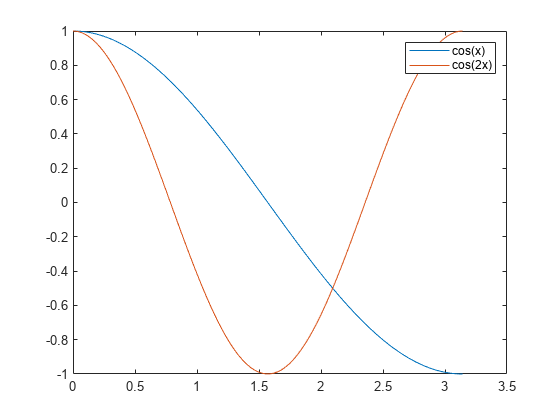MATLAB is a powerhouse for data analysis, visualization, and mathematical computations. One of its standout features is the ability to create legends that enhance your plots. Legends provide essential context by labeling different plot elements, making it easier for viewers to interpret your data.
Whether you’re working on simple graphs or complex visualizations, understanding legend functions in MATLAB can significantly improve the clarity of your presentations. From basic commands to advanced functionalities, there’s a lot to explore when it comes to using legends effectively in MATLAB.
Ready to dive into the world of legend functions? Let’s unpack what makes them so useful!
Basic Legend Function: legend()
The basic legend function, `legend()`, is an essential tool for any MATLAB user. It provides a straightforward way to create legends that help label data series in plots.
Using this function is simple. You can call it after your plotting commands and pass the labels as arguments. This instantly enhances the interpretability of your graphs by associating colors or markers with clear descriptions.
You can also customize the legend’s position on the plot using options like ‘northwest’ or ‘southeast’. This flexibility allows you to ensure that your legends do not obscure important data points.
The `legend()` function supports various formatting options too. For instance, you can adjust font size and style, making it easier for viewers to read key information at a glance.
Mastering this basic functionality sets a solid foundation for working with more advanced features in MATLAB’s legend toolkit.
Advanced Legend Functions: legendflex() and leginon()
When it comes to enhancing your graphics in MATLAB, legendflex() and leginon() are powerful tools that take legends to the next level.
The legendflex() function allows for flexible positioning of legends. It’s particularly useful when you have multiple plots or complex figures. You can specify exact locations, making sure your legend matlab doesn’t obscure vital information on your graph.
On the other hand, leginon() is geared towards creating more dynamic legends. This function enables automatic updating of contents in response to changes in the plot. If you’re working with interactive visualizations, this feature saves time and effort while maintaining clarity.
Both functions provide options for customization as well, giving you control over font size and color schemes. With these advanced capabilities at your disposal, presenting data becomes not just clearer but also aesthetically pleasing.
Creating Interactive Legends: legclick() and legcallback()
Creating interactive legends in MATLAB can significantly enhance the user experience. The `legclick()` function allows users to interact with legend entries effortlessly. By clicking on a legend item, it triggers specific actions, such as highlighting or isolating data series.
On the other hand, `legcallback()` takes interactivity a step further. This function enables developers to define custom callback functions that execute upon interaction with the legend. Whether you want to display additional information or manipulate plot visibility, this flexibility is invaluable.
These functionalities not only make visualizations more engaging but also allow for dynamic analysis of your data without cluttering your workspace. Integrating interactive legends into your MATLAB projects invites users to explore their datasets in new and exciting ways.
Customizing Legends with Properties
Customizing legends in MATLAB can enhance the clarity and appeal of your visualizations. By tweaking legend properties, you can create a more engaging presentation of your data.
You have control over font size, color, and style using properties like ‘FontSize’, ‘TextColor’, and ‘FontWeight’. Want to make your legend stand out? Adjust its background color with the ‘Color’ property or set transparency using ‘EdgeColor’.
Positioning is also vital. Use the ‘Location’ property to place your legend where it best fits without obscuring essential parts of your plot.
For advanced customization, consider using a combination of these features together. This gives you ultimate flexibility in making legends that are not just informative but also visually appealing. Each change contributes to better communication between your data and audience.
Tips for Using Legend Functions Effectively
To make the most of legend functions in MATLAB, start by keeping your legends clear and concise. Avoid cluttering them with excessive text. Instead, use short labels that effectively describe each plot.
Consider using color coding or distinctive markers for better visual differentiation. This approach not only enhances readability but also makes it easier to interpret complex graphs.
Utilize the `Location` property to position legends where they don’t obstruct important data points. Experiment with different placements until you find the optimal view.
If your plots are dynamic, explore interactive legend options like `legclick`. This feature allows users to toggle visibility, adding an extra layer of interactivity without overwhelming them with information.
Always revisit your legends after making changes to plots. A little adjustment can significantly improve clarity and presentation quality.
Conclusion
When working with MATLAB, understanding the various legend matlab functions is essential for creating clear and informative visualizations. The basic `legend()` function serves as a fundamental tool for labeling plot elements, while advanced options like `legendflex()` and `leginon()` provide enhanced functionalities to manage complex legends.
Creating interactive legends with `legclick()` and `legcallback()` allows users to engage dynamically with their plots. This interactivity can significantly enhance user experience, especially in presentations or during data analysis sessions. Customizing these legends using specific properties opens up even more possibilities for tailoring your visual output to fit your needs perfectly.
To utilize these features effectively, consider experimenting with different configurations and styles that best convey your information. Whether you’re developing simple plots or intricate graphics, mastering the legend functions in MATLAB will undoubtedly elevate your work’s clarity and professionalism. Embracing these tools not only enhances usability but also improves communication of ideas through visuals—an invaluable asset in any data-driven field.

Leave a Reply